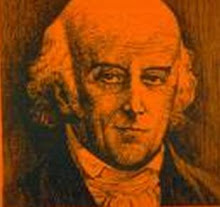(please read all the posts from the beginning or this won't make sense)
Let’s recap some ideas that have already been covered…
Hahnemann found that a like disease cured a like disease. He defined disease as a collection of individual symptoms, particular to each person experiencing said disease. He then invented remedies that created a set of symptoms that he catalogued. He kept accurate notes on these symptoms by observing people that took the remedies (even himself and his family). He compiled these sets of symptoms created for each remedy in a book called a Materia Medica. He now could match a remedy that caused a particular set of symptoms to a disease that showed the same symptoms. He could give an ill person that remedy and because the remedy was “similar” to the disease in the ill person, it would cure it.
But now we have a problem (us, not Hahnemann). For each remedy that he gave to his subjects (called provers), Hahnemann noted hundreds and hundreds of symptoms created. This huge set of symptoms wasn’t that big a deal for him because he could actually remember what symptom was created by what remedy. He could do that because he ate, slept and breathed this homeopathy 24/7. For us mortals, the sheer number of symptoms related to each individual remedy is overwhelming. So when we have an illness with a bunch of symptoms, we would have to wade through hundreds of pages (Materia Medica) of possible symptoms looking for those that matched OUR symptoms. You see we are just trying to find the homeopathic remedy that will create those symptoms that are closest to our own illness. And, we need to find the ONE remedy that is closest. What a dilemma and a bunch of work.
Then came von Boenninghausen (1785 to 1864). Boenninghausen was a pretty smart cookie… so smart in medicine that he was given an honorary degree without ever stepping foot in medical school. He was the homeopath that Hahnemann trusted for his own treatment. He was a real avid study of botanicals… plants were his passion and he grew fond of categorizing (as is the norm for that kind of stuff). He figured out a way to work backwards with the remedies and he created a book (an index) of symptoms categorized by parts of the body. He created a book that had categories like Head, Stomach, Eyes, etc and in each section a symptom like head ache, stomach upset, or eye redness, etc and for each symptom, a list of remedies. The remedies listed would create that particular symptom in a healthy person. You can imagine that this book was big. It had symptoms upon symptoms indexing the remedies that would create those symptoms.
This book was called a repertory. And the action of looking up symptoms in this book from those observed in an ill patient is called repertorizing. Well, repertorizing is a bit more that just looking up the symptoms, but you get the general idea.
Subscribe to:
Post Comments (Atom)


Thanks for such interesting and informative posts. I've learned from them all.
ReplyDeleteCassandra
I have read several books and have never heard Homeopathy described this way. You make it easy to understand. Thanks for taking the time to make this information available.
ReplyDeleteThanks so much for commenting on my blog - I enjoyed reading your last few posting - good stuff.
ReplyDelete